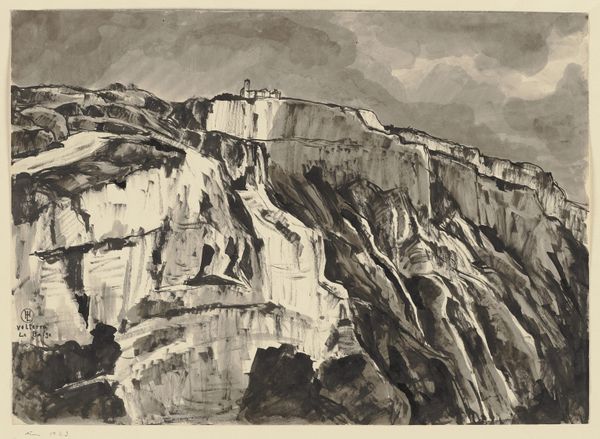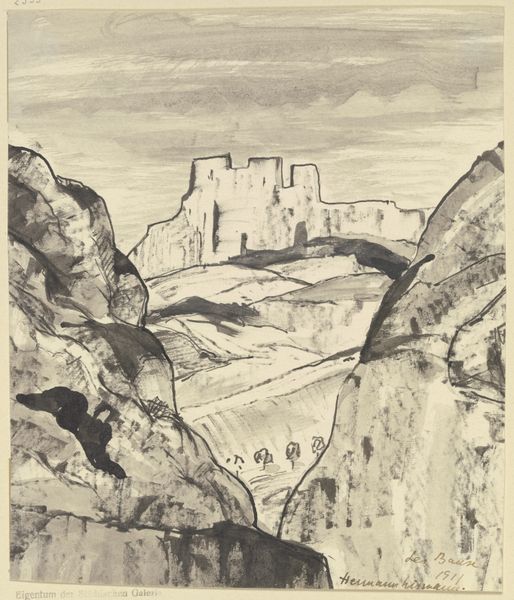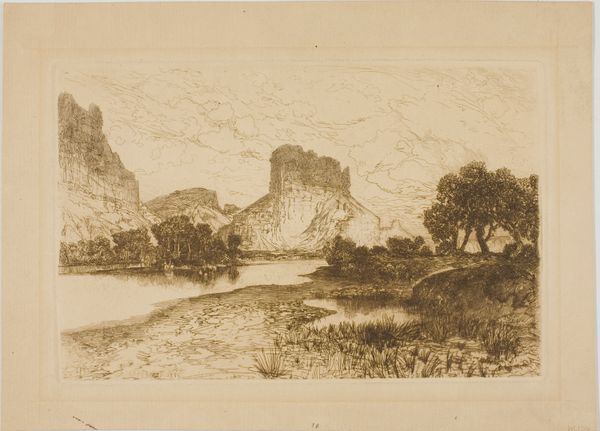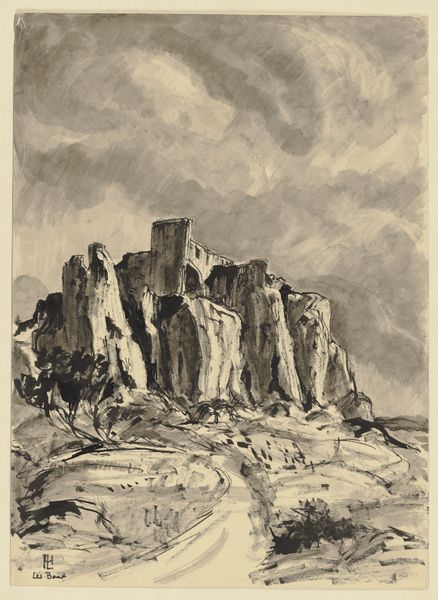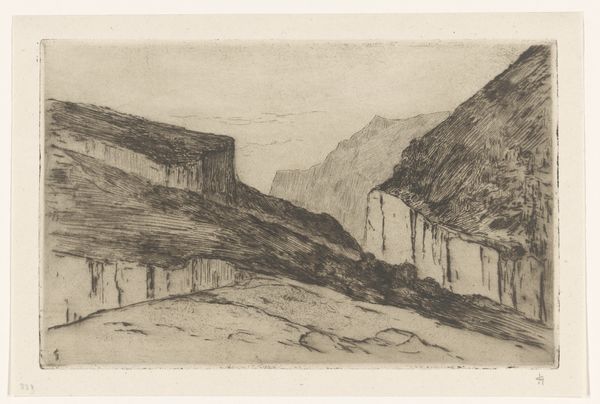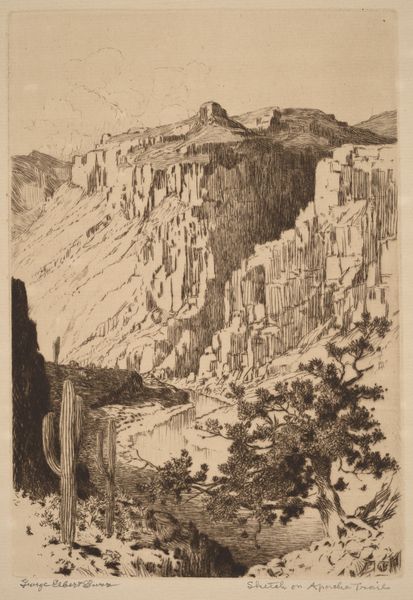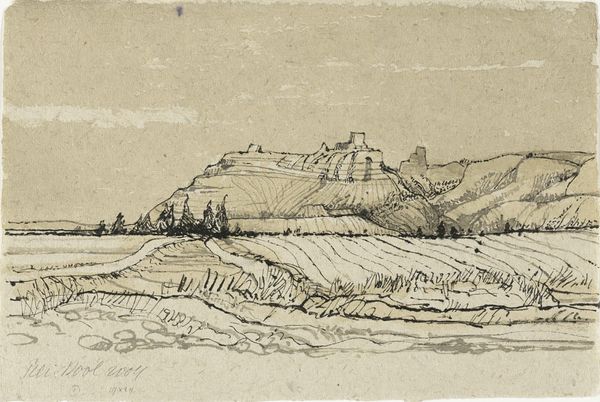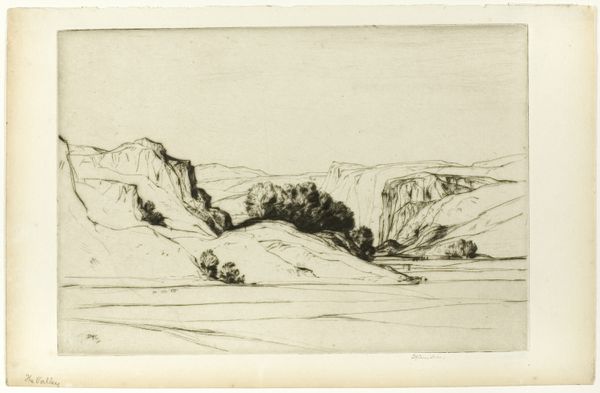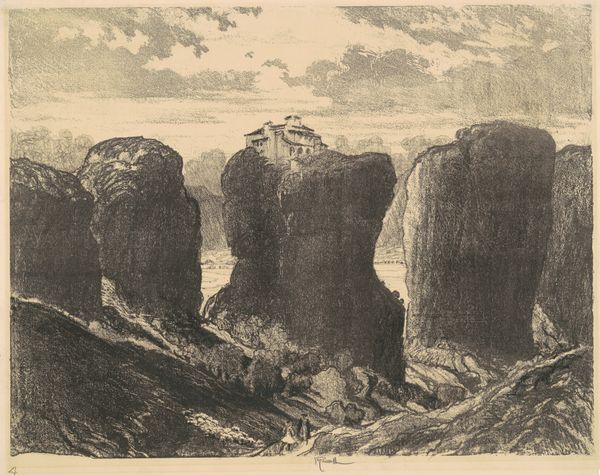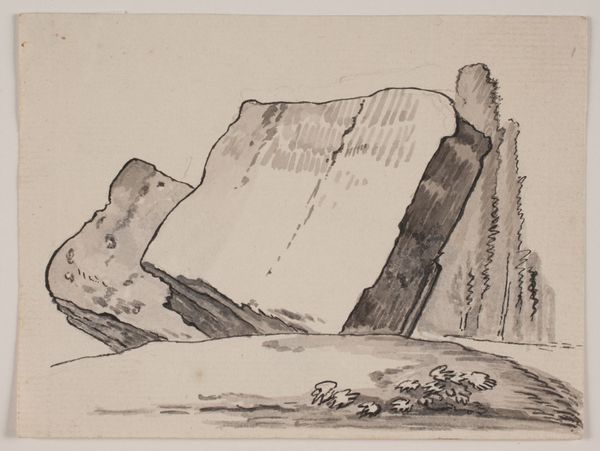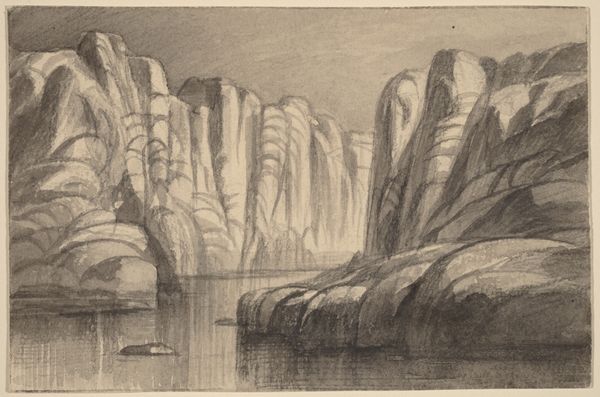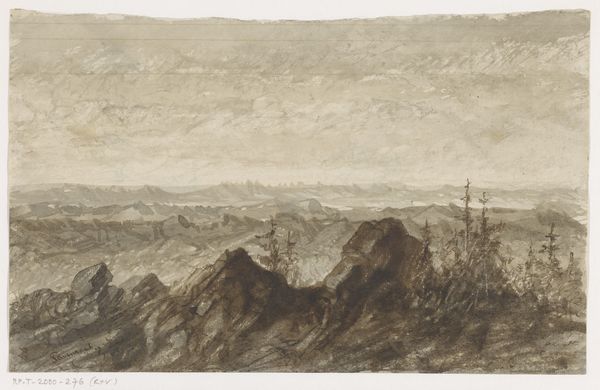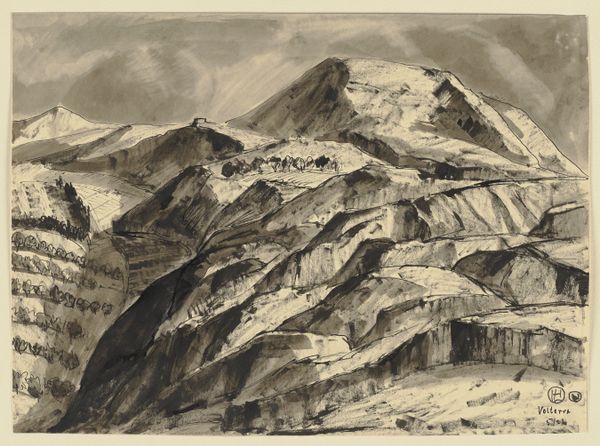
drawing, paper, ink, indian-ink
#
drawing
#
landscape
#
paper
#
charcoal art
#
ink
#
indian-ink
Copyright: Public Domain
Editor: Here we have Hermann Lismann’s drawing of “Pietra di Bismantova” in ink and charcoal. There's an almost forbidding starkness to the landscape, stripped bare with only the cliff and that skeletal tree. How do you interpret this work? Curator: That starkness you perceive resonates deeply, doesn’t it? I see it as a landscape imbued with a specific kind of melancholic power. Beyond the surface depiction, consider the potential commentary on our relationship with the natural world, particularly the ways in which landscapes are often romanticized, ignoring histories of labor, ownership, and access. What sociopolitical dimensions can we unpack from Lismann’s artistic choices? Editor: I hadn’t thought of it that way. I was mainly focused on the visual impact. But thinking about it… is this desolation somehow symbolic of social and political realities of the time? Is it a rejection of idealized rural landscapes in art? Curator: Precisely! We need to look at Lismann as more than just a recorder of scenery. What’s missing, or rather, downplayed, in the composition is crucial. Are there human figures present? What about evidence of cultivation, habitation? Its absence invites reflection upon whose stories are traditionally foregrounded in landscape art, and who are overlooked. Who benefits, historically, from this aesthetic experience? Editor: That’s a really powerful point. Now I am wondering, did Lismann intentionally critique the established canon, or was this just his way of portraying the world as he saw it? Curator: Perhaps both can be true simultaneously! The most compelling artworks often exist in this kind of productive ambiguity. Considering art through an intersectional lens allows us to have those challenging, but essential, dialogues about representation and social justice. Editor: I appreciate how you encouraged us to see this landscape as more than just a pretty picture; it’s definitely food for thought! Curator: Indeed. And hopefully it inspires us to engage more critically with the art we encounter, constantly questioning whose narratives are privileged, and which are marginalized.
Comments
No comments
Be the first to comment and join the conversation on the ultimate creative platform.
